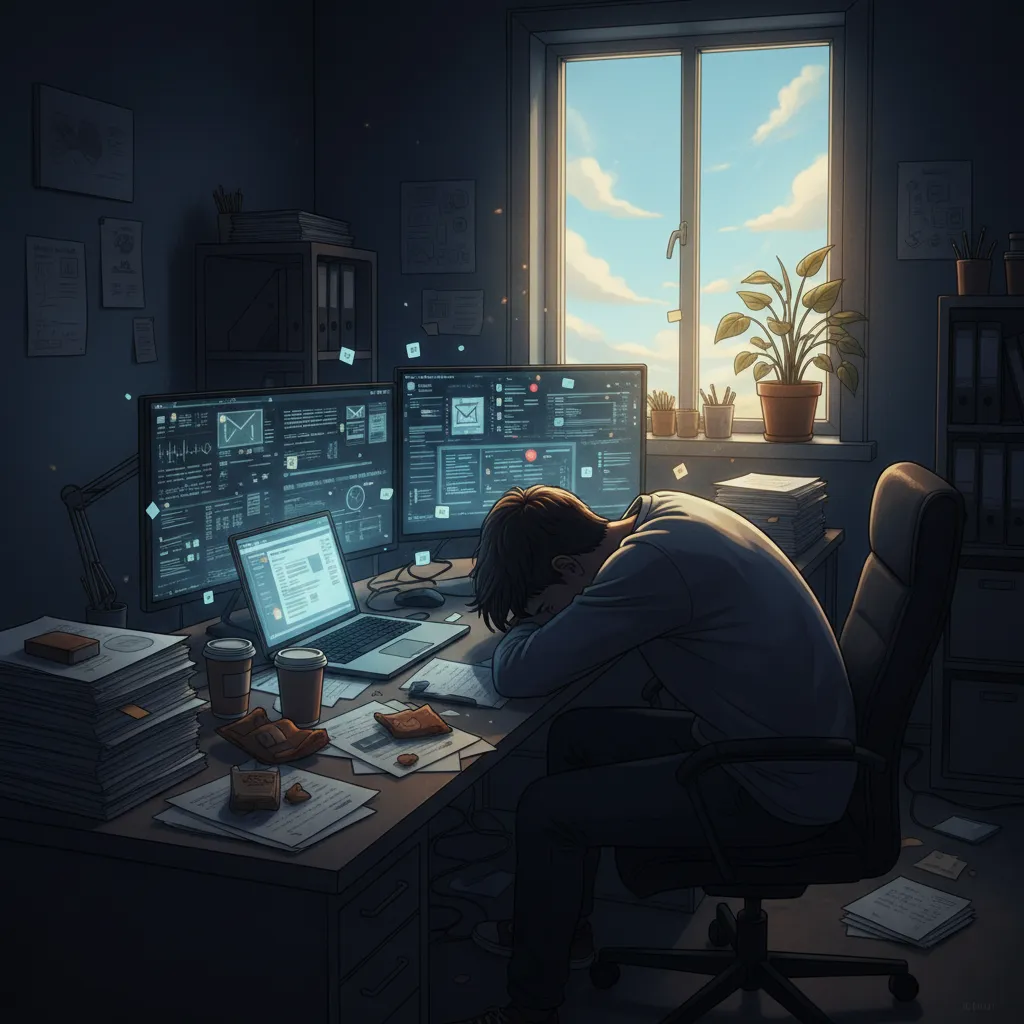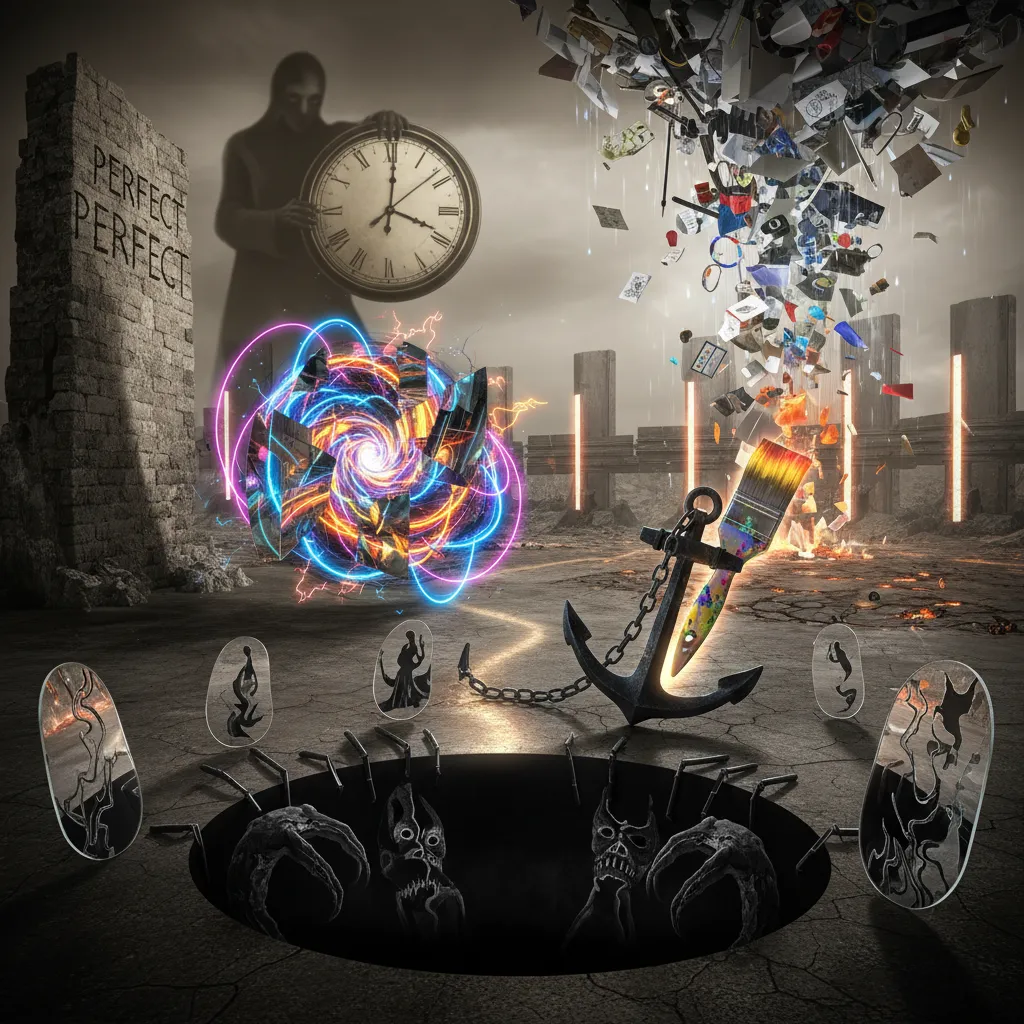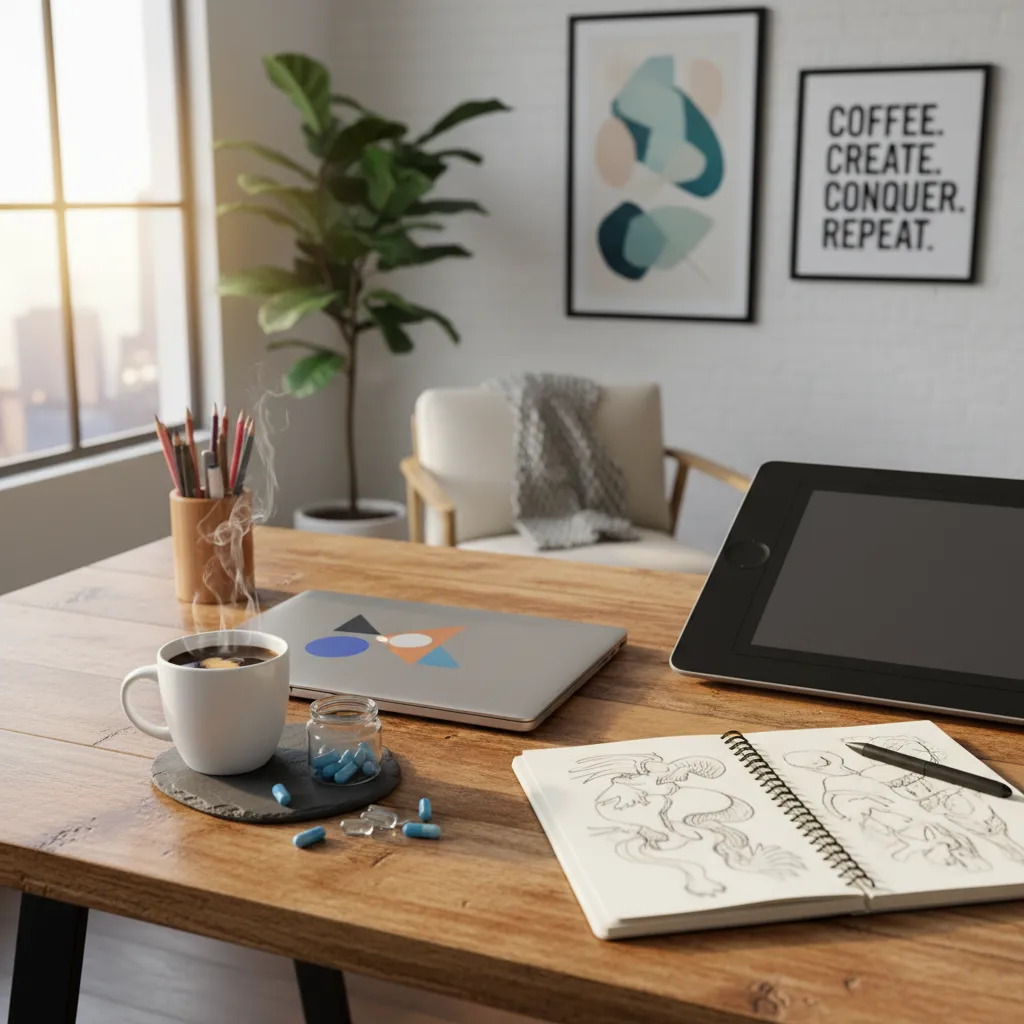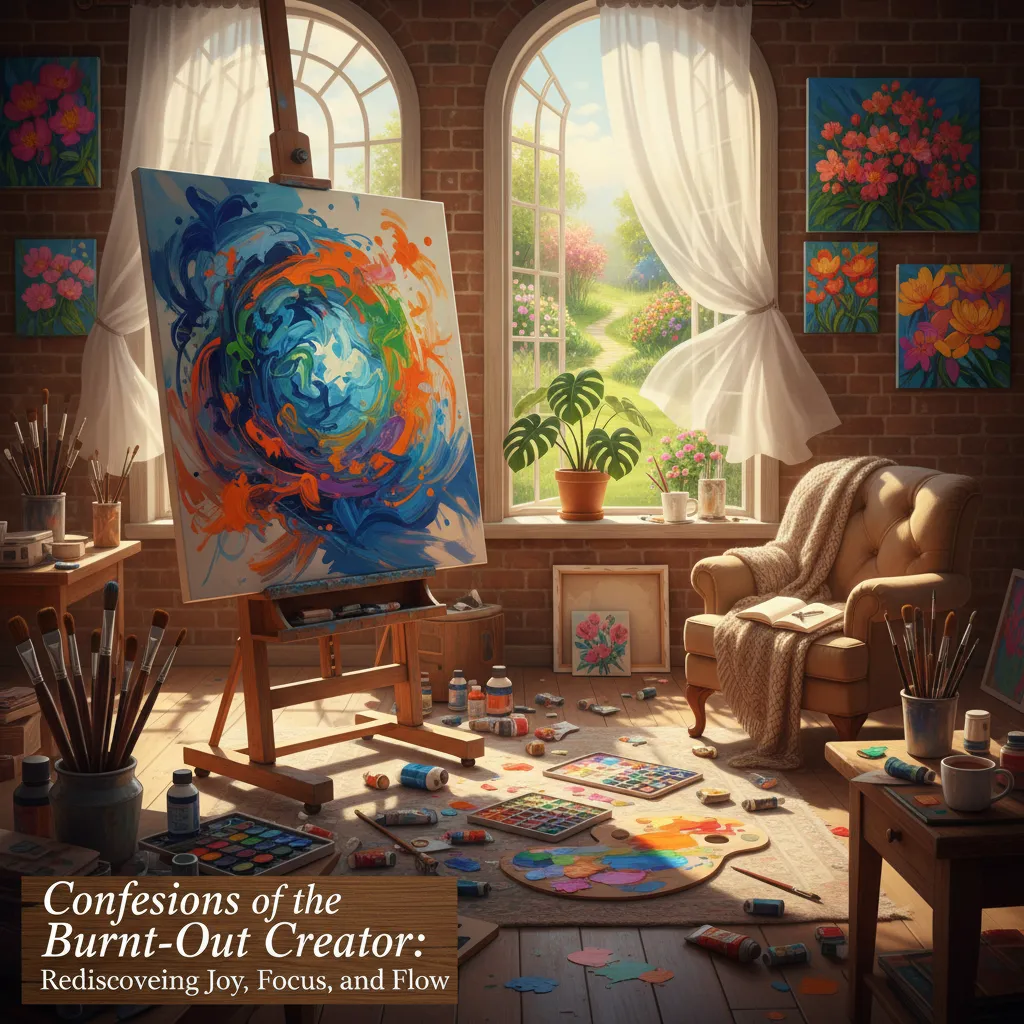Picture this: You’re uploading, posting, answering comments—but inside, you’re defaulting to survival mode. Been there. Over the past year, I was running on fumes while everyone else thought I was ‘crushing it.’ Between running a business, being a present dad, and dealing with chronic pain, the silent exhaustion crept in. Nobody told me being a creator was secretly a series of small identity crises, caffeine experiments, and the constant chase for energy. Today, I want to spill the messy truth and let you in on the actual journey of creator burnout—and why getting your brain back is more important than another productivity hack.
Unexpected Burnout: When Hustle Eats Joy
If you’re a creator, you probably know the drill: keep showing up, keep uploading, keep hustling. But what happens when the hustle starts to eat away at your joy? For a long time, I didn’t even realize it was happening to me. I was still making content, still leading my business, still being a dad, and still managing family conflicts and chronic pain. But inside, I felt tired—bone-deep tired. My mind was foggy, my energy was low, and yet, I kept pushing forward.
Here’s the tricky part about creator burnout: it doesn’t always announce itself loudly. Sometimes, it creeps in quietly, disguised as just another busy week. You might notice you’re just going through the motions. You’re not thriving; you’re surviving. The videos go up, the posts get scheduled, but the spark is missing. The joy that once fueled your creativity is replaced by a dull sense of obligation.
“Burnout can be insidious. Sometimes you don’t even really know that you’re burnt out.” That’s exactly how it felt for me. I was running on autopilot for months, convinced I was just powering through a rough patch. I told myself I just needed to work harder, push a little more. But the truth was, I was stretched thin—mentally, physically, and emotionally.
The burnout symptoms signs aren’t always obvious. For creators, it can look like:
- Constant fatigue, no matter how much you rest
- Mental fog and trouble focusing
- Feeling like you’re in ‘survival mode’ every day
- Loss of excitement for projects you once loved
Most creators miss these signs because content creator burnout is sneaky. We’re used to grinding, to pushing through. We mistake “getting by” for “doing fine.” It wasn’t until I stopped to reflect that I realized how much joy I’d lost. Burnout, for me, wasn’t a dramatic crash—it was a slow leak, draining my energy and passion drop by drop.
If you find yourself in this place, know you’re not alone. Burnout can be a wake-up call, a chance to recalibrate your priorities and rediscover what truly brings you joy as a creator.

The Nine Silent Killers of Creative Flow (A.k.a. How to Sabotage Yourself)
Let’s get honest about the burnout symptoms signs that sneak up on creators. If you’ve ever lost hours to YouTube rabbit holes or maxed out your phone’s Safari tabs (guilty!), you know how easy it is to mistake digital busyness for real work. These are the energy drains disguised as productivity—the silent killers of creative flow.
- 1. Overconsumption: You tell yourself it’s research, but endless scrolling on TikTok or Instagram is just noise. Digital consumption creativity is a double-edged sword: yes, you need inspiration, but too much content crowds out your own ideas.
- 2. Too Many Open Tabs: Ever had 500 browser tabs open? I have. My phone once maxed out, mirroring my overloaded brain. Every open tab is an open loop, a tiny drain on your focus and energy.
“There’s just too many inputs, too many open loops, too much messaging, too many things happening in our lives coming at us that of course you feel overwhelmed and drained.”
- 3. Unresolved Messages: Those unread texts, DMs, and emails pile up, quietly nagging at your attention. Each one is a mental sticky note, pulling you away from deep work.
- 4. Lack of Recovery: Here’s a secret from pro athletes: recovery matters more than time management. Without real rest, you’re just running on fumes. Burnout recovery strategies start with learning to pause and recharge.
- 5. Inconsistent Sleep: Poor sleep is a creativity killer. No amount of hustle can replace the energy management techniques that start with a good night’s rest.
- 6. No Ramp Up or Ramp Down: Jumping straight into work—or never winding down—leaves your brain in a constant state of chaos. Rituals for starting and ending your creative sessions are essential.
- 7. Poor Communication: Not telling others when you need uninterrupted time? Expect constant interruptions. Protect your flow by setting expectations.
- 8. No Boundaries: Especially if you work from home, blurred lines between work and life mean you’re always “on.” Boundaries are a non-negotiable part of energy management techniques.
- 9. Too Much Input, Too Little Solitude: Creativity needs quiet. If you never unplug, your mind never gets the space it needs to make connections and generate new ideas.
Recognizing these silent saboteurs is the first step toward reclaiming your energy, focus, and creative joy.

Coffee, Nootropics, and the Not-So-Secret Creator Edge
If you know me, you know I love black coffee. No cream, no sugar—just straight-up focus fuel. But here’s the confession: caffeine by itself doesn’t always help me stay locked in. And what if I have too much? I get anxious. I get jittery. And what about that afternoon crash and mental fog? Sound familiar?
That’s where my search for burnout recovery strategies began. Coffee alone wasn’t cutting it, so I started exploring nootropics, adaptogens, and caffeine alternatives for focus. That’s when I stumbled onto the science of time-release caffeine and nano-encapsulation. Imagine getting all the focus, but with fewer jitters and no crash. When I first swapped my usual cup for matcha, I felt like a slightly upgraded cyborg—zero jitters, just smooth, steady energy. Matcha’s natural time-release effect was a game changer, but the real breakthrough came with new tech: nano-encapsulated caffeine, which releases even more gradually for sustained mental clarity.
Experimenting with Magic Mind: My Mental Performance Shot Routine
Enter Magic Mind. This isn’t just a random sponsor—this is a brand I’ve been a fan of for over a year. Their original blend packs 55mg of caffeine, plus a stack of nootropics and adaptogens for mental clarity: think B vitamins for vitality, ashwagandha for stress, and more. For me, it’s become a staple in my content creation routine. I feel calm, focused, but no anxiety, no jitters—just a nice, sustained energy. That’s the Magic Mind caffeine performance edge.
Mixing It Up: Caffeine-Free & Max Versions
- Magic Mind Original: 55mg caffeine, adaptogens, and nootropics for balanced focus.
- Caffeine-Free: Perfect for afternoons or when you want to skip the caffeine but keep the mental clarity. I’ll often pair this with my afternoon coffee to avoid overdoing it.
- Magic Mind Max: 165mg caffeine for those marathon content days when you need to batch record or push through creative blocks.
Whether you’re chasing flow or recovering from burnout, experimenting with nootropics, adaptogens, and caffeine alternatives can help you rediscover focus and joy in your creative work. And if you want to try Magic Mind, there’s a 60% discount for the Think Media community—just use the code thinkM60.

Rebuild, Don’t Just Restart: Daily Routines To Prime (Not Pressure) Your Creativity
When you’re burnt out, the instinct is to just “get back to work.” But real creative productivity doesn’t come from forcing yourself through fatigue. It’s about rebuilding, not just restarting. Here’s the creative flow protocol I’ve developed—three steps that prioritize rest and recovery, so you can create with joy, not pressure.
Step 1: Ramp Up—Build Rituals for Mind Shifts
Before you even think about creating, set the stage. My ramp-up routine is my secret weapon. The night before a big filming day, I prioritize rest and recovery: I protect my sleep, shut off my phone early (okay, I try—blue-light blockers help), and hydrate. In the morning, I’ll take a cold shower—uncomfortable, yes, but it’s like flipping a switch for my brain. I’ll play a hype playlist, say a quick prayer or mantra, and let these rituals shift me into creative flow. These aren’t just habits—they’re signals to my brain that it’s time to create.
Step 2: Rest—Don’t Skip Recovery
Here’s the truth: tired eyes rarely see a bright future. If you want to prime creativity, you must prioritize rest and recovery. That means respecting your body’s needs—good sleep, mindful nutrition (no post-Thanksgiving food comas before filming!), and regular breaks. Creative flow isn’t about grinding nonstop; it’s about daily resets that keep your mind sharp and your spirit light. Spiritual and emotional health matter too—prayer, meditation, or just a few quiet moments can make all the difference.
Step 3: Schedule Wisely—Separate Planning and Performing
This is the game-changer: prep and plan your content on a different day than you perform. Why? Because your brain’s left side handles planning (precision), while the right side handles performing (presence). If you try to do both at once, you’ll feel off—trust me, I learned this the hard way. Once, I scheduled filming right after a “Dad meltdown day.” The footage was a disaster (though, in the edit, it was at least hilarious). Now, I respect the left/right divide.
“Planning is precision, performing is presence.”
- Ramp up with intentional rituals
- Prioritize rest and recovery
- Separate planning and performing days
These daily routines aren’t about pressure—they’re about priming your creativity for sustainable, joyful output, no matter what season you’re in.
The Blessing in Burnout: A Not-So-Glamorous Reset Button
Let’s be honest: burnout never feels like a blessing when you’re in the thick of it. You’re exhausted, uninspired, and maybe even questioning your entire creative path. But what if this collapse is actually a not-so-glamorous reset button—a chance to find balance in burnout and build a more sustainable creative career?
Imagine this: your internet crashes for a whole week. At first, panic sets in. Deadlines loom, notifications pile up, and you feel cut off from the world. But after the initial shock, something surprising happens. The noise fades. The constant pressure to keep up disappears. You notice how much energy was leaking away, not just from work, but from endless scrolling, news alerts, and the fragmented attention that comes with modern life. Suddenly, you have space to breathe, reflect, and reconnect with what truly matters.
We’re no longer in the era of time management. Now, it’s all about energy management and emotional health. There are so many things draining your dopamine and serotonin—social feeds, relentless news, and the quiet ache of disconnection. Burnout forces you to stop the bleeding. It’s your body and mind demanding a break, a daily reset, or sometimes a full creative recovery after collapse.
Rest isn’t just lying down or zoning out. It’s learning the art of deep, intentional unplugging. It’s about stepping away from the noise, even briefly, to refill your creative well. Taking a break isn’t a luxury; it’s a necessity for mental health and sustainable content creation. As one wise creator put it,
"Most creators are not lazy—they’re just drained."
Burnout can be a blessing in disguise. It invites you to slow down, reassess your goals, and realign your work with your true values. When you rebuild after burnout, you regain creative autonomy and clarity. You get to choose what comes back into your life—and what doesn’t. In the end, hitting ‘pause’—whether by choice or by circumstance—can be the creative reboot you never knew you needed. So, next time burnout knocks you flat, remember: it might just be your not-so-glamorous reset button, guiding you toward a more balanced, joyful, and sustainable creative journey.
TL;DR: If you’re feeling empty or stuck as a creator, you’re not alone. Prioritize your energy and joy over endless hustle, experiment with routines (and maybe some brain-boosting supplements), and never underestimate rest. True creativity grows in recovery, not in the grind.



